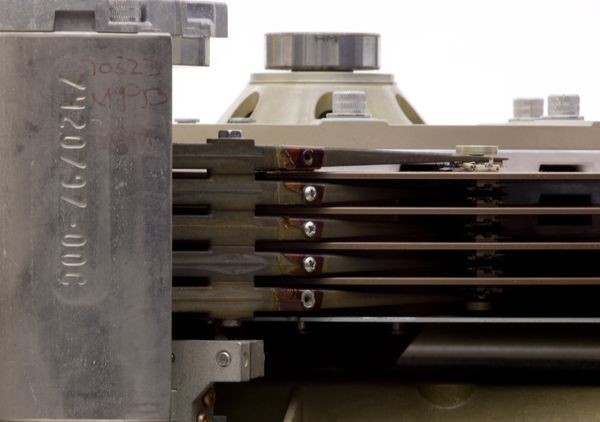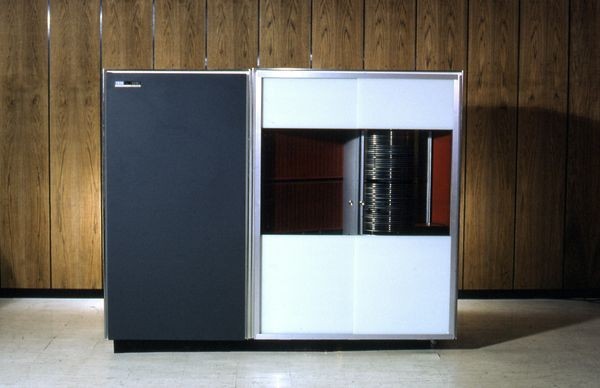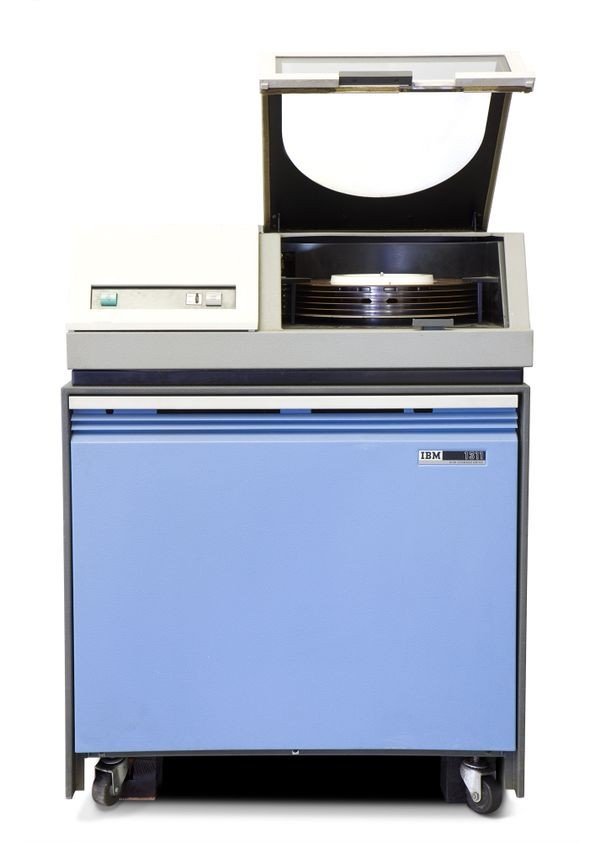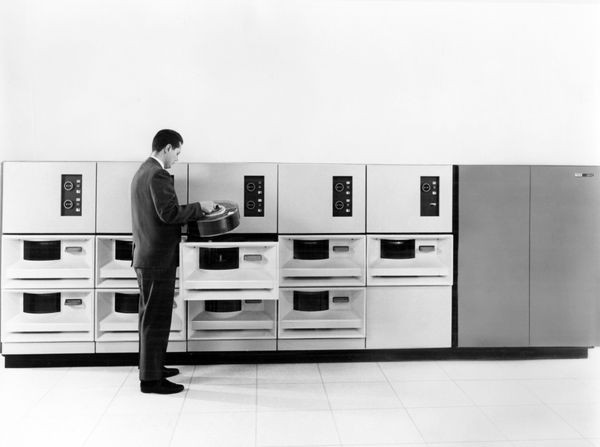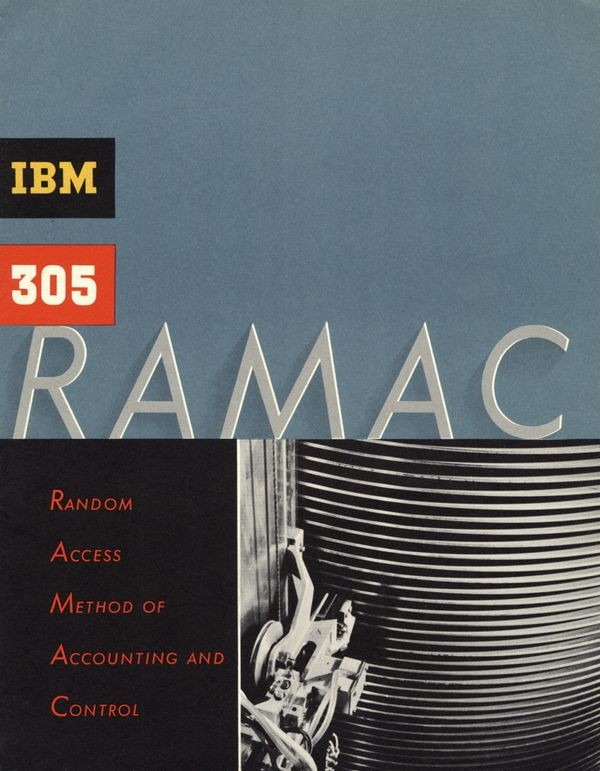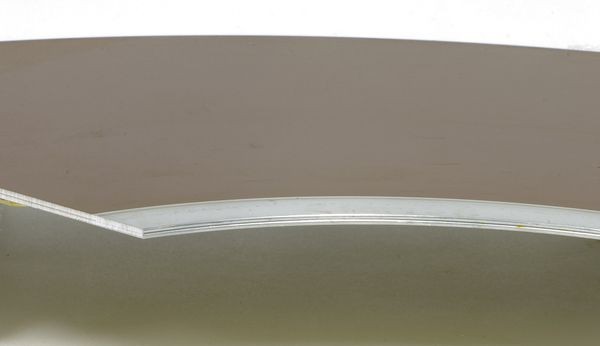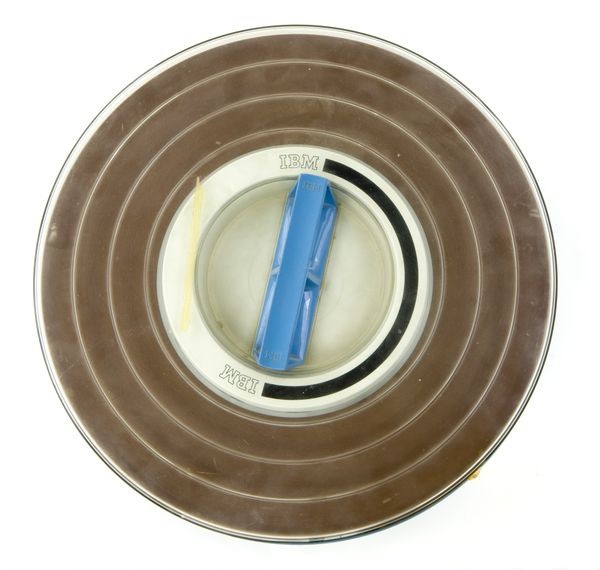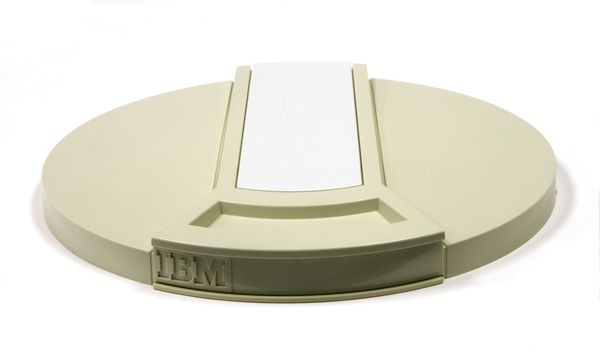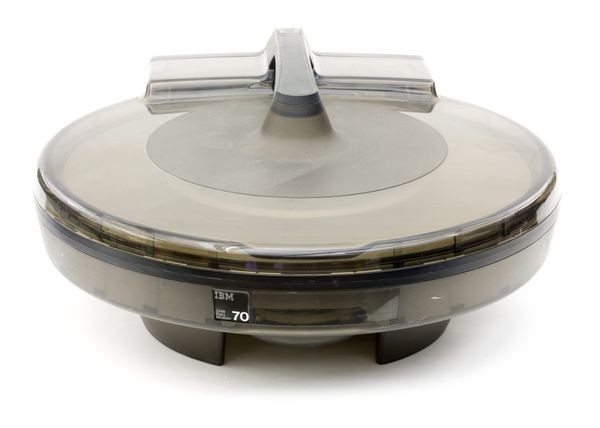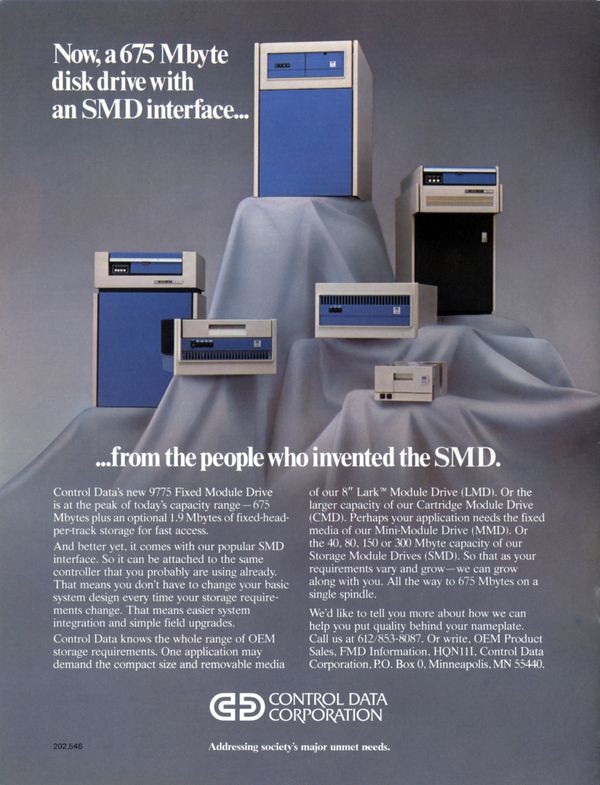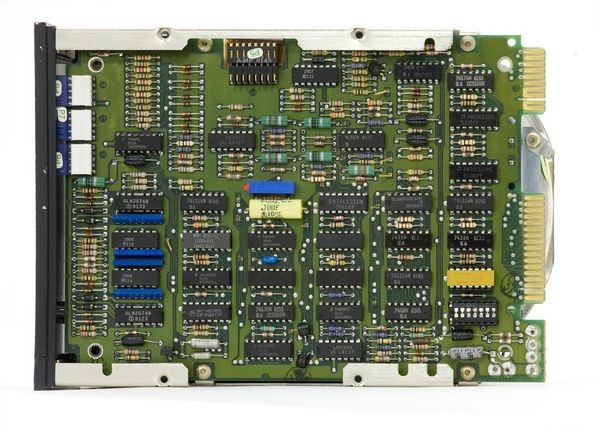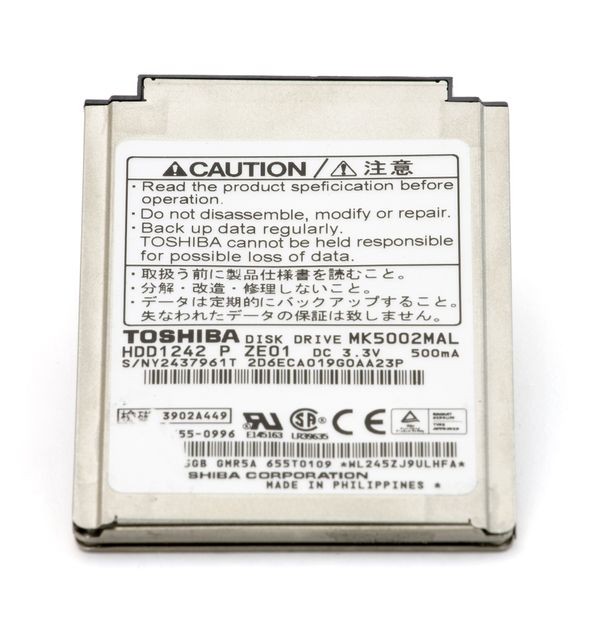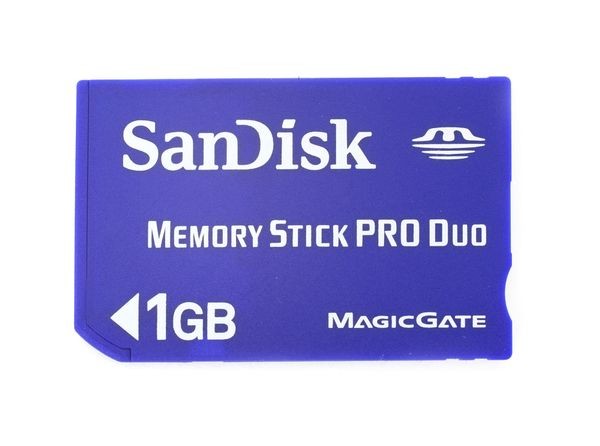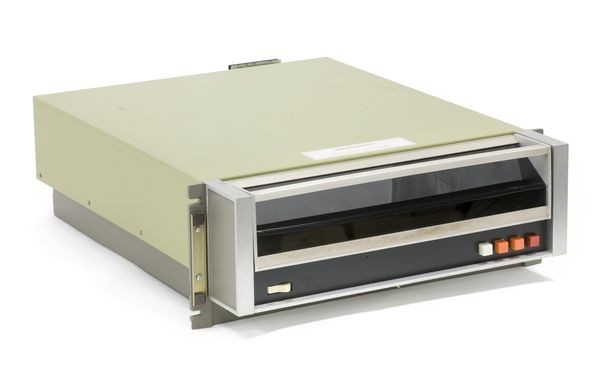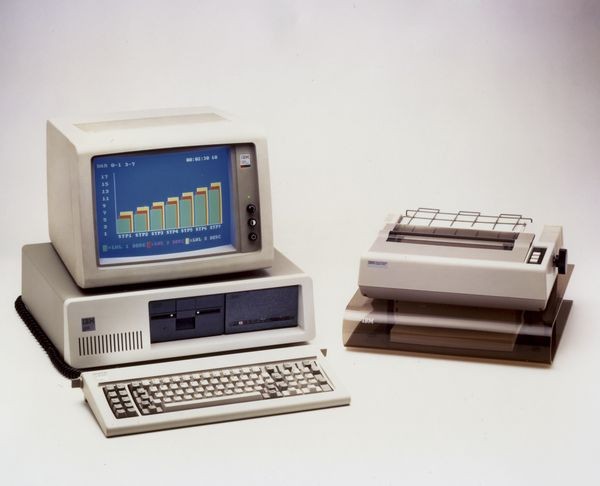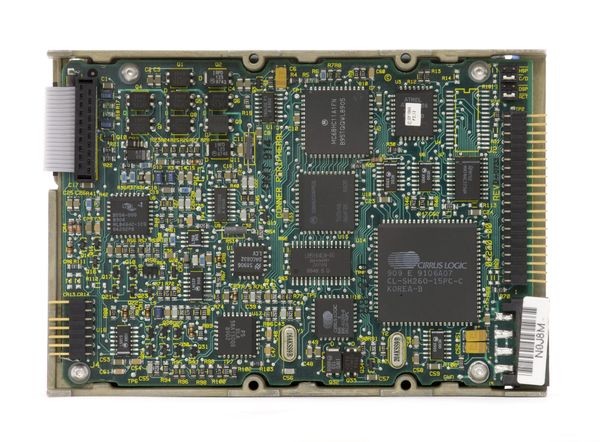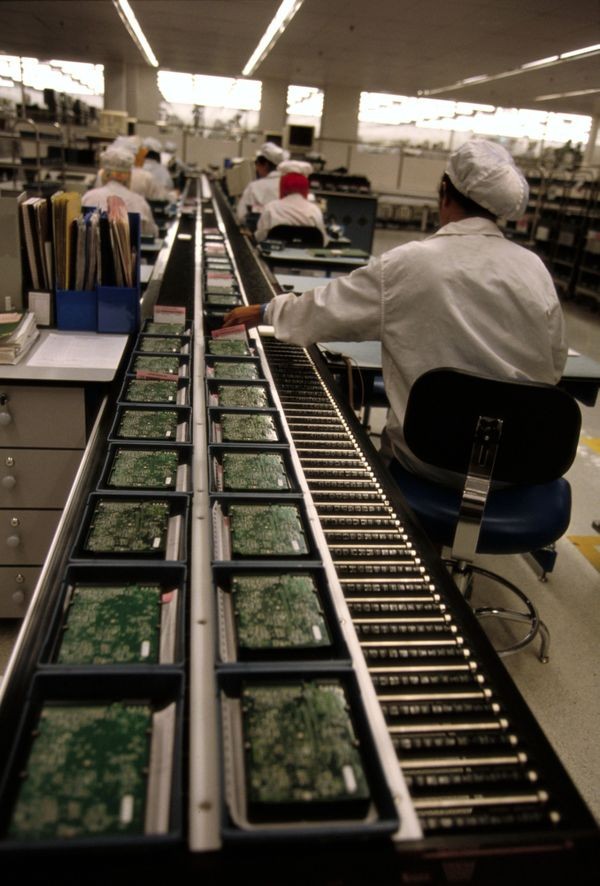Magnetic Hard Disks
DEC Head Disk Assembly (HDA)
The 120MB RA80 was DEC's first large capacity fixed disk drive, using a “clamshell” hard disk assembly (HDA) with a unique moving magnet actuator. These drives were mass storage for DEC's PDP-11, VAX, and DEC-10 systems.
Magnetic Hard Disks
Ever since engineers first took the RAMAC disk for a spin in the 1950s, magnetic disk storage has held sway.
There are periodic predictions of its demise. In 1975, Andrew Bobeck, developing “bubble memory” at Bell Labs, forecast the end of “those marvelous mechanical whirling dervishes….” But the dervishes remain.
Disks endure because they store data permanently, and are rewritable, relatively fast, and portable. Capacity continually grows thanks to improvements in read/write heads and a reduction of the “flying” height between head and disk surface, which allows more tightly packed data bits.
IBM 305 RAMAC System
The RAMAC operator could watch the disk’s operation through a glass window.
View Artifact DetailIBM 1301 disk storage unit
This successor to the RAMAC 350 had one head that “flew” aerodynamically over each disk surface. The SABRE airline reservation system used 16 units, each with 28 MB.
View Artifact Detail1311 disk storage drive
This breakthrough drive used removable disk packs to allow unlimited offline storage -- like tapes, but faster. Data could be easily moved to another computer, or changed to run a different application program.
View Artifact DetailIBM 2314 direct access storage facility
Eight drives (plus a spare) with removable 29 MB disk packs shared one control unit. Attached to a System/360 computer, it supported applications like online banking, ATMs and just-in-time manufacturing.
View Artifact DetailIBM 3340 direct access storage facility
This Winchester technology drive array was IBM’s last storage system with large removable disk packs. Strings of 2 to 8 3340 drives could be attached to an IBM mainframe computer, providing a storage capacity of up to 280 million bytes per string.
View Artifact DetailIBM 305 RAMAC brochure
IBM heavily promoted RAMAC with brochures, films, magazine articles and public appearances, describing the disk as “a miracle memory.”
View Artifact Detail1316 disk pack
The first removable disk, this 10-pound package with a convenient handle held six 14” platters that stored just 2M characters. Since the disks were not sealed, dust contamination was a problem.
View Artifact Detail2315 disk cartridge
This 1MB disk cartridge was used with the IBM 1800 and 1130 computers. It provided easily transported “personal storage” for users of those small computers.
View Artifact Detail3340 data module
“Winchester” technology puts the read/write heads, platters and access mechanism in a sealed removable unit. Low-mass heads land safely on the lubricated platter surface when the power is off. Most hard disks do that now, but are no longer removable.
View Artifact DetailThe Market Gets Crowded
As personal computer use exploded, so did demand for hard disks. Competition to meet this burgeoning demand peaked in 1984 with 77 manufacturers. After that, decreasing profit margins—and the strength of more established manufacturers—brought consolidations and closures. Only a handful of disk drive companies remain.
IBM, inventor of the hard disk, saw its market share shrink to 10%. It exited the business by selling it to Hitachi in 2002.
Control Data Corporation (CDC) disk drives advertisement
CDC was one of the largest makers of disk drives from the 1960s through 1980s. CDC's storage module device (SMD) disk drives were critical to the mainframe and minicomputer market.
View Artifact DetailST-506 5MB hard disk drive
This first 5¼ inch hard disk was the size of a 5¼ inch floppy disk drive and had a similar interface, so it was easy to add to PCs. Many startup companies made compatible drives. Few survived.
View Artifact DetailMicrodrive
Designed for consumer products such as digital cameras, this hard disk used a 1 inch platter and stored up to to several GB. Tiny disks like these were largely overtaken by flash memory.
View Artifact Detail1.8 inch MK5002MAL disk drive
This was the storage for music in the first Apple iPod. Engineering head Jon Rubenstein said “The key element was the drive.”
View Artifact DetailSanDisk Memory Stick (1GB)
The MS PRO Duo is a flash memory format co-developed by SanDisk and Sony for use in Sony consumer electronics devices.
View Artifact DetailDiablo Series 30 disk drive
Many companies made their own drives to IBM media standards. Diablo used IBM 2315-type cartridges but had much faster data access. They shipped to their first customer, DEC, less than a year after the company started.
View Artifact DetailIBM PC/XT
The $4,995 IBM PC /XT was essentially an IBM PC with a hard disk. Its 10MB disk was often the Seagate ST-412, a popular disk drive at the time whose interface became a standard.
View Artifact DetailCP-344 hard disk drive
Although not the first, Conner’s 3½ inch hard drive propelled the company to $1.3 billion in sales in four years, a record in US history.
View Artifact Detail10 GB iPod
Apple’s was not the first digital music player, but the low-cost miniature hard disk drive made it possible to “put 1,000 songs in your pocket.”
View Artifact DetailDisks Go Global
Disk drives were born in San Jose, California. But they exploded into an international industry.
Fierce price competition drove manufacturers to make the drives where labor costs were lower. Seagate moved production to Singapore in 1982, where assemblers were paid a dollar an hour. Today, East Asia produces most disks.
Mass production of hard disk drives in Malaysia
Overseas manufacturing is a key to low cost in a very competitive industry.
View Artifact Detail